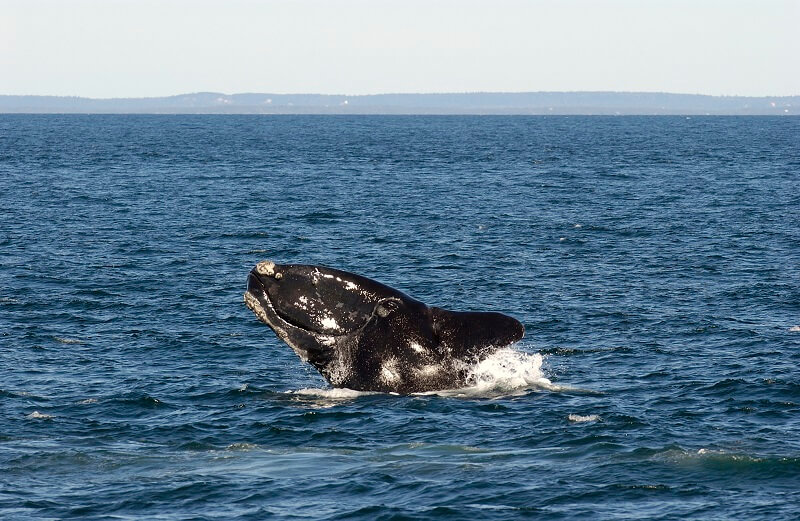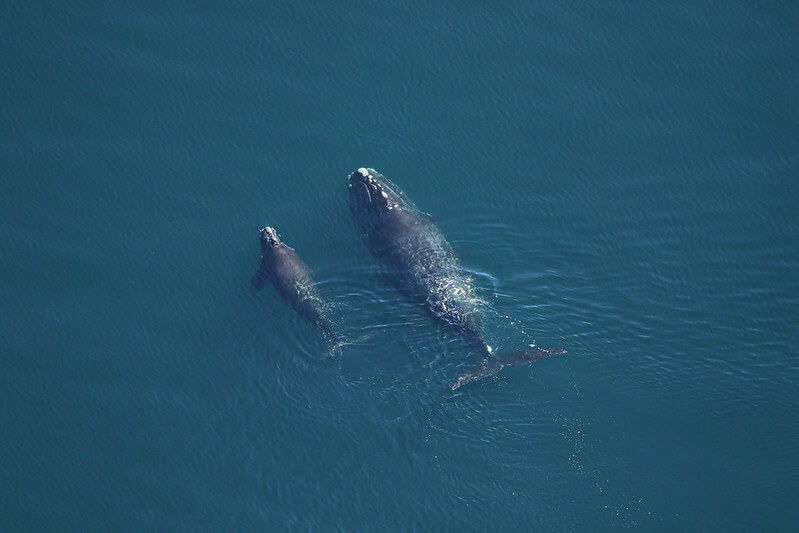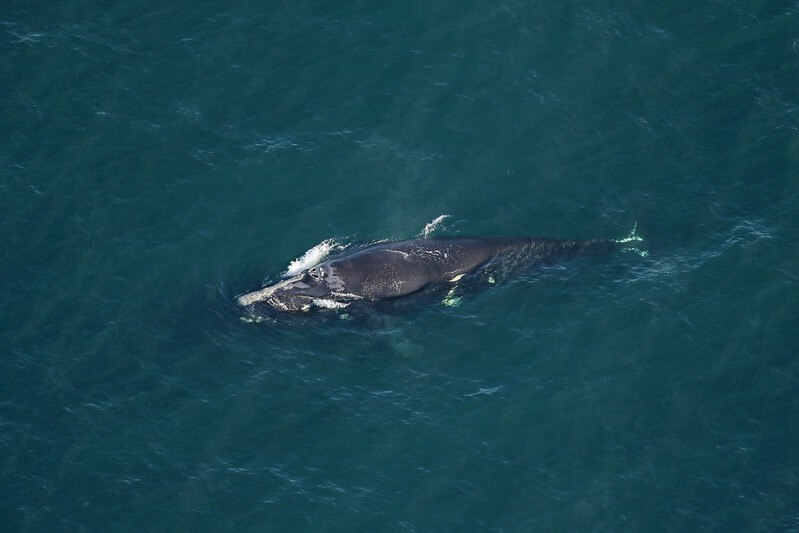One of the most critically endangered cetacean species in the world, the North Atlantic right whale has been under close scrutiny in Canadian and US waters since 2017. The news this year is rather good: a large number of births have been registered and very few incidents involving collisions or entanglements have been reported. This certainly brought comfort to the scientists who are working hard on their conservation! Even so, with a population numbering fewer than 350 individuals, the species is not out of danger yet.
The next generation
During the 2020-2021 calving season, 20 newborn right whales were tallied. Sadly, two of these calves succumbed to fatal collisions: the offspring of the female Infinity (#3230), whose carcass washed up on a Florida beach in February 2021, and an unknown calf found dead in North Carolina in November 2020. The latter was the first calf of the season.
Another calf filmed off the coast of Spain’s Canary Islands made its share of headlines. This individual, whose fetal folds and small size suggested that it was very young, was not accompanied by its mother and has not been seen since. It is therefore highly unlikely that it survived. Its presence in the area came as a surprise to scientists and raised questions about the use of this area for calving.
A total of 20 births might not seem like much for an entire species, but this was the most prolific breeding season since 2016! Encouraging news for this population that now has fewer than 100 mature females. And with two births already recorded for the 2021-2022 season, this ray of hope shines a little brighter!
Quiet year in Canada
This year was marked by a total of just three deaths and four incidents of concern. And for the second year in a row, there were no mortalities in Canadian waters!
In addition to the calves that perished in collisions, just one carcass was found: that of the male Cottontail (#3920), who died in February following an entanglement and whose carcass was discovered in Myrtle Beach, South Carolina.
Two entangled individuals were reported in Canada this year: the male #4615 and the female Snow Cone (#3560). The latter’s entanglement was first reported in the United States and three separate attempts were made during the year to release her. Ultimately, responders were able to remove a good amount of rope but did not succeed in completely freeing this individual. Nevertheless, this did not prevent Snow Cone from giving birth in December to an apparently healthy calf.
In the US, the season was marked by several incidents. Male #1803 was also seen ensnared in ropes off the coast of Georgia. The female Infinity (#3230) was the victim of a ship strike in Florida, a collision that resulted in the death of her calf and serious injuries to her. Neither individual has been seen since.
Diligent protective measures
After a number of dismal years, the lack of mortality on the Canadian side is particularly exciting for conservationists. Can we infer that no mortalities really occurred? In fact, it’s not impossible that a carcass or a living whale managed to go “under the radar.” However, the intense surveillance being carried out limits this possibility. Indeed, a series of regulations were implemented in response to the surge in mortalities that began in 2017, which prompted Canada to take concrete action.
There are many dynamic protective measures currently in place to ensure the safety of North Atlantic right whales in Canadian waters. For example, the sighting of a right whale in a given sector triggers the local closure of the corresponding commercial fishing area for a two-week period in order to minimize the risk of entanglements. Additionally, in certain parts of the Gulf, vessels over 13 metres have been imposed a mandatory speed limit of 10 knots in order to reduce the risk of collisions.
Despite the numerous right whale mortalities in recent years and the hurdles that remain to ensure their protection, the encouraging results of 2021 seem to vindicate the efforts made in North America to save these giants of the sea from extinction. Are these measures really paying off, or is the lull observed this year simply a stroke of good luck? Only time will tell.








